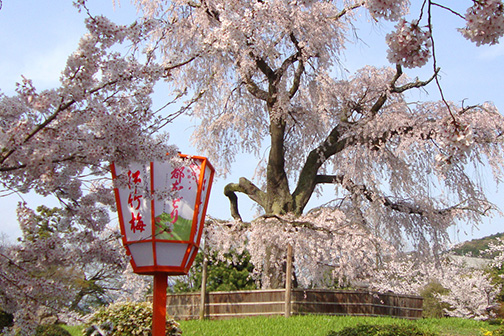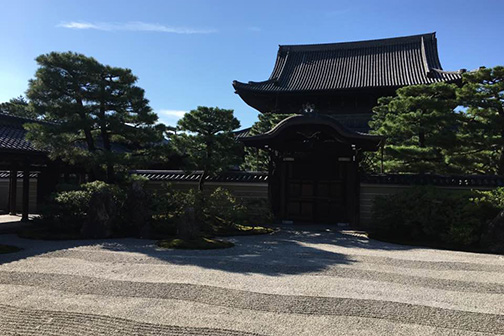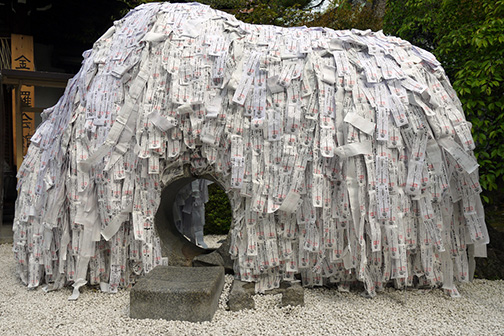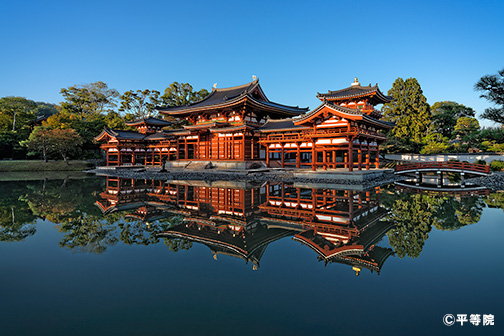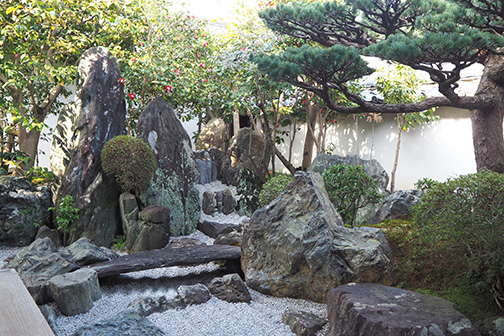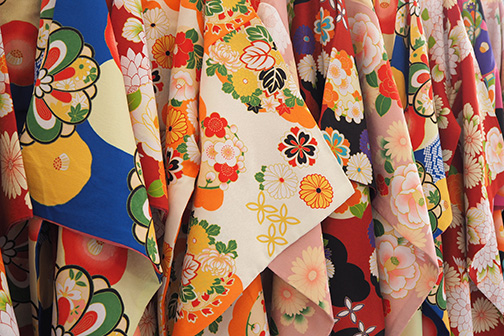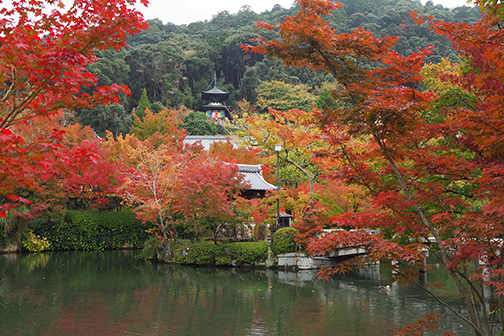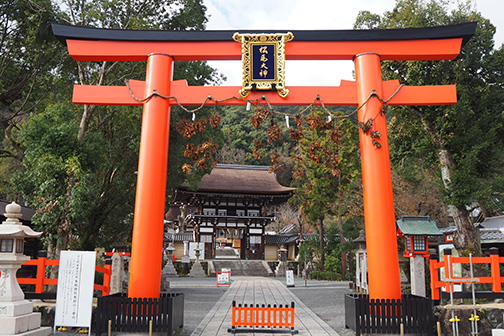
Timeless Kyoto
Explore Kyoto: Tours and Itineraries
森 -Forests-
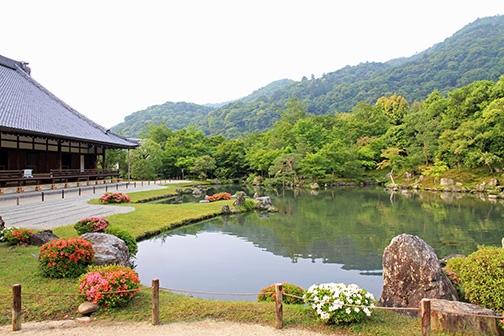 Tenryu-ji Temple
Tenryu-ji Temple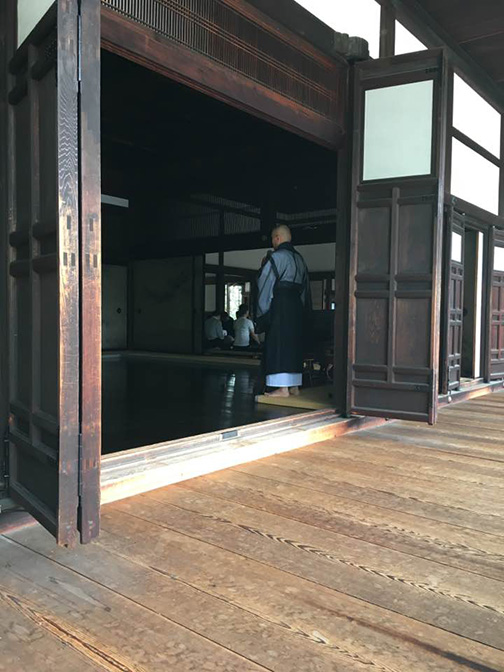 Zen meditation
Zen meditation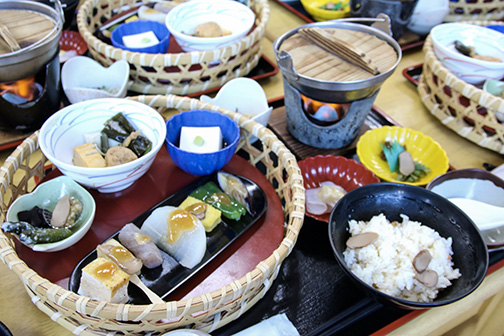 Shojin ryori (Buddhist cuisine)
Shojin ryori (Buddhist cuisine)Kyoto
Zen lecture at Tenryu-ji Temple
Receive a lecture on Zen Buddhism by a Buddhist monk at Tenryu-ji Temple, a UNESCO World Heritage site in the Arashiyama area of Kyoto.
Experience Zen meditation at a World Heritage site
After the lecture, experience a Zen meditation session in the meditation hall.
Shojin ryori (Buddhist cuisine) lunch
Enjoy shojin ryori (Zen Buddhist vegetarian cuisine) at Shigetsu, a large temple-style restaurant surrounded by the natural beauty of Tenryu-ji Temple’s gardens and part of the UNESCO World Heritage site.
Yoga workshop at a temple
Nourish your body and soul with the calming energy of yoga at a peaceful and beautiful temple in Kyoto.
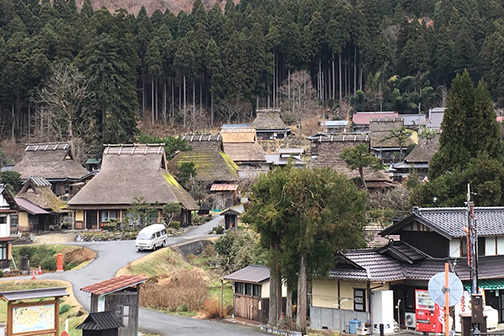 Kayabuki no Sato
Kayabuki no Sato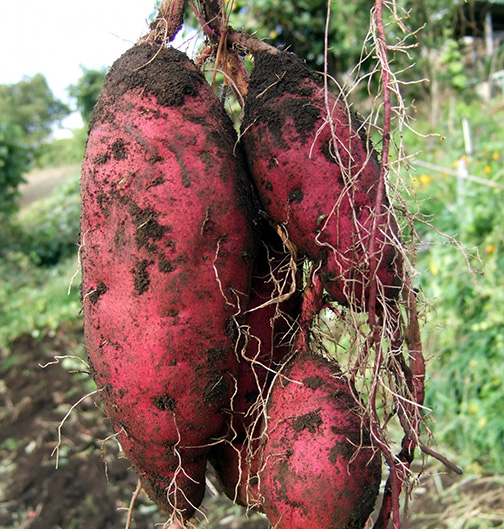 Vegetable harvest
Vegetable harvest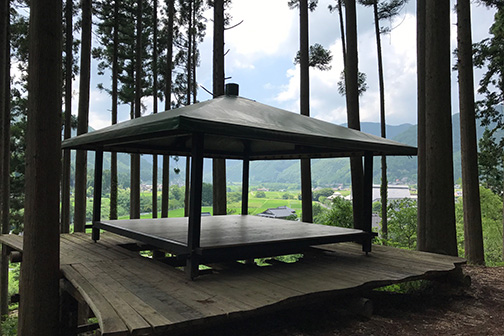 Yoga in a forest
Yoga in a forestMiyama (Kyoto Prefecture)
Kayabuki no Sato
Miyama Town is well known for its hamlets, where traditional farmhouses with thatched roofs still exist. Kitamura is an area with a particularly large number of such thatched-roof houses that make up a village. The idyllic, rustic scenery and the thatched roofs create a peaceful and soothing atmosphere. In 1993, the Kitamura area was designated a Preservation District for Groups of Historical Buildings.
Experience the seasonal vegetable harvest
This is a great opportunity for people who have limited travel time but are interested in Japanese agriculture to casually enjoy harvesting fresh vegetables in Kyoto. You can also enjoy eating the vegetables at the farm.
Miyama Kayabuki Gallery and Folk Museum
The folk museum exhibits a large permanent collection of traditional tools and artifacts from Miyama’s past, while the art gallery stages rotating exhibitions by various artists.
Yoga workshop in a forest
Enjoy practicing yoga while immersed in lush natural surroundings. Breathe deeply, connect your mind and body, and use the power of your breath to bring alive every cell of your body and ignite your passion for living.
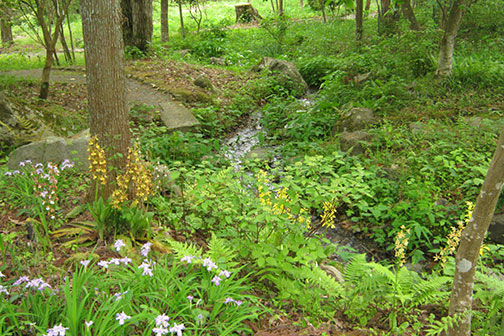 Sunai no Sato
Sunai no Sato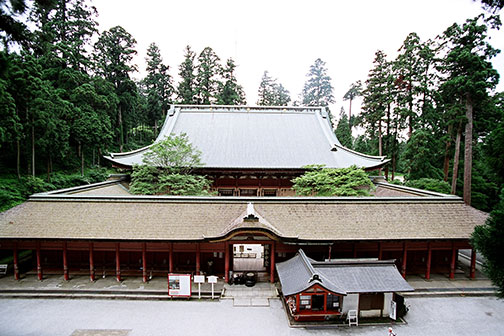 Enryaku-ji Temple (Konpon Chu-do)
Enryaku-ji Temple (Konpon Chu-do)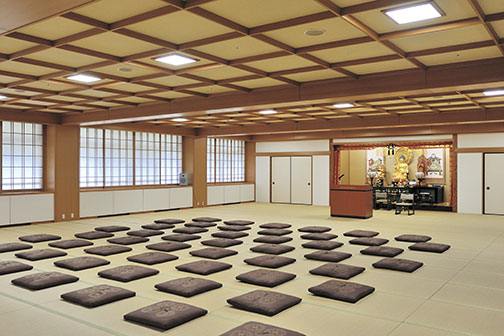 Enryaku-ji Kaikan
Enryaku-ji KaikanKyoto—Shiga Prefecture—Kyoto
Kano Shojuan Sunai no Sato
Kano Shojuan Sunai no Sato is a complex consisting of more than 20,000 m² in size and located on the hillside of Otsu City. It is also on the bank of Seta River, which is the only river to flow out of Lake Biwa, the largest freshwater lake in Japan. Enjoy many kinds of Japanese traditional experiences such as tea ceremonies, mochibana (decoration made of sweet rice dumpling) making workshop and making wagashi (Japanese sweets). You can also enjoy yoga workshops or trekking in the forest.
Lake Biwa
Known as “Mother Lake,” Lake Biwa is the largest fresh water lake in Japan and the third oldest lake in the world.
Sakamoto Cable Car
The longest cable car route in Japan at 2,025 m in total, opened in 1927. It connects the bottom of the mountain with Enryakuji Station in an 11-minute journey. You can look out over Lake Biwa through their large European style windows.
Enryaku-ji Temple
Located in Kyoto’s eastern mountain range on Mt. Hiei, Enryaku-ji Temple is one of the most important monasteries in Japanese history and the headquarters of the Tendai sect of Japanese Buddhism. This temple was founded in 788 by Saicho and was destroyed by feudal lord Oda Nobunaga in 1571 and later rebuilt. It’s been a UNESCO World Heritage site since 1994.
Enryakuji Kaikan (Temple Lodging)
Enryakuji Kaikan is a shukubo, traditional temple lodgings, and offer guests an excellent chance to experience the simple, austere lifestyle of Buddhist monks with shojin ryori (Buddhist cuisine) being served. Guests are usually invited to watch or participate in activities such as the morning religious services.
Kameoka & Arashiyama
Sagano Scenic Railway train ride
The Sagano Scenic Railway travels a 7.3-km route in a leisurely 25 minutes from Saga to Kameoka Torokko Station. The retro red and yellow train cars offer unmistakable charm as you weave your way through the Hozukyo Ravine while listening to the conductor’s stories. The train stops momentarily at the most impressive sights so you can better enjoy them and snap photos. Depending on the time of year, you might spot a traditional wooden boat taking a pleasure cruise down the Hozugawa River below. No matter what the season, the train ride offers an opportunity to enjoy the mountain’s natural beauty.
Kyobasha carriage ride
The horse-drawn carriage departs from the front of Kameoka Torokko Station. Enjoy a leisurely 25-minute ride by carriage in what would take 5 minutes by car. The rhythmic clopping of the horse’s hooves, the feel of the breeze on your face, and the beautiful natural scenery will remain etched in your mind long after the trip has ended.
Hozugawa-kudari (Hozugawa River boat ride)
Visit the Hozugawa River in Kyoto to be surrounded by gorgeous year-round scenery and have the exciting opportunity to experience rapids and the refreshing spray of the river. For over a thousand years, the Hozugawa River has been home to a bustling and thriving water transportation culture.
Arashiyama Monkey Park Iwatayama
Around 120 wild Japanese macaques live at Arashiyama Monkey Park Iwatayama. You can observe the monkeys amid the lush natural surroundings all four seasons of the year. The mountainous Arashiyama is especially beautiful when the cherry trees are blooming in spring and the maple trees are changing color in fall. Take a break from the bustle of the city and relax while watching monkeys in a natural habitat.
Hot spring spa experience
Enjoy the Japanese tradition of soaking in natural hot spring waters at Arashiyama Onsen. The baths use 100% natural hot spring water. The water is slightly alkaline and is said to relieve nerve and muscle pain as well as be good for the skin.
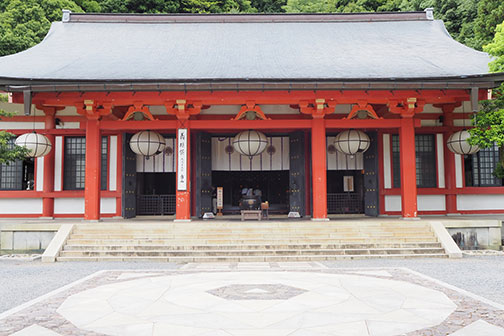 Kurama-dera Temple
Kurama-dera Temple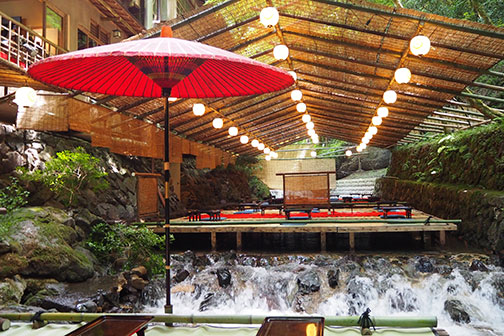 Kawadoko
Kawadoko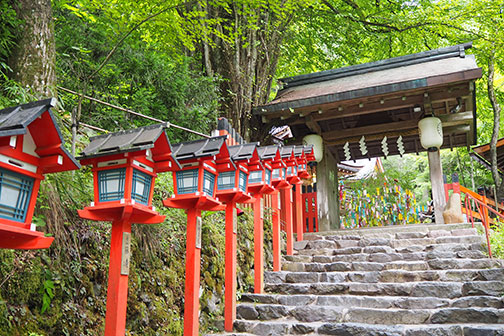 Kibune-jinja Shrine
Kibune-jinja ShrineKurama & Kibune
Shosai-an/Takizawa Residence
A large house stands out on a corner along the Kurama Highway, an area that has preserved its historical charm. It is the 250-year-old Takizawa Residence (Shosai-an), designated a National Important Cultural Property. Including this residence, only three machiya homes in Kyoto have been designated National Important Cultural Properties. Many of Kyoto’s traditional machiya have been destroyed by fire in wars or disasters. Besides being old (the Takizawa Residence was built in 1760), the architectural style is relatively uncommon in Japan in general. The decorative gables that adorn both sides of the living quarters are called udatsu and were an indication of the family’s wealth.
Kurama-dera Temple
Located high on densely wooded mountain, Kurama-dera Temple is one of the few temples in modern Japan that still retains an air of pure spirituality. The esoteric temple was founded in the 8th century and is dedicated to the spirituality of nature and worship of mountains, attested to by its brilliant natural setting.
Kawadoko Lunch
Kawadoko (commonly known as noryoyuka) refers to dining along the river, and offers a way for people to cool off and escape the summer heat. The dining platforms are usually erected over rivers, and Kyoto has a lot of beautiful rivers with amazing scenery. Kibune is a famous spot for kawadoko dining, with reservations sometimes difficult to get in the busy summer months.
Kibune-jinja Shrine
Kibune-jinja Shrine is over 1,600 years old—older than Kyoto itself. It enshrines the god of water and rain, and was visited in the past by Imperial envoys that came to pray for rain. Farmers and sake brewers have traditionally paid homage at this shrine. The shrine is also popular among women who come to pray for luck in love. The bright green leaves in early summer and the fall colors are especially beautiful. The shrine covered in snow is also a wonderful sight in winter. When the snow falls, people come from far away to take photos of the fantastic scenery. Kibune-jinja Shrine delights the senses and soothes the soul.

